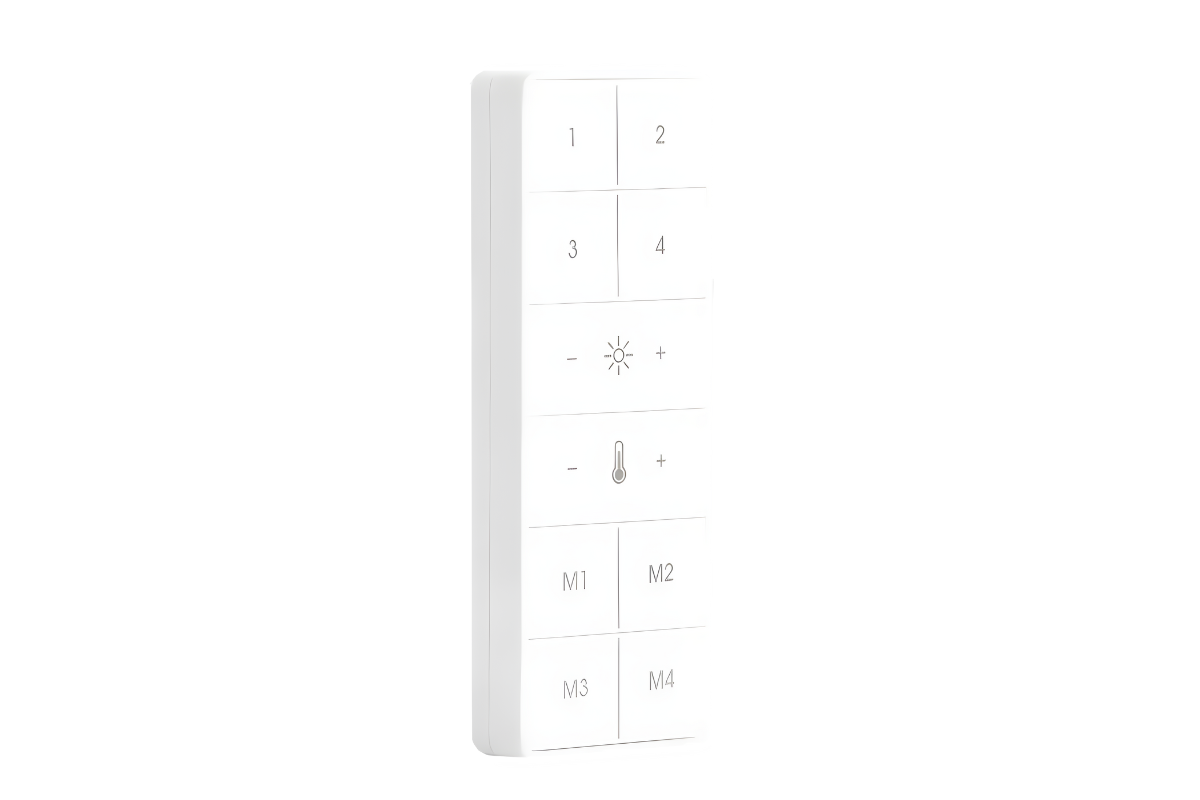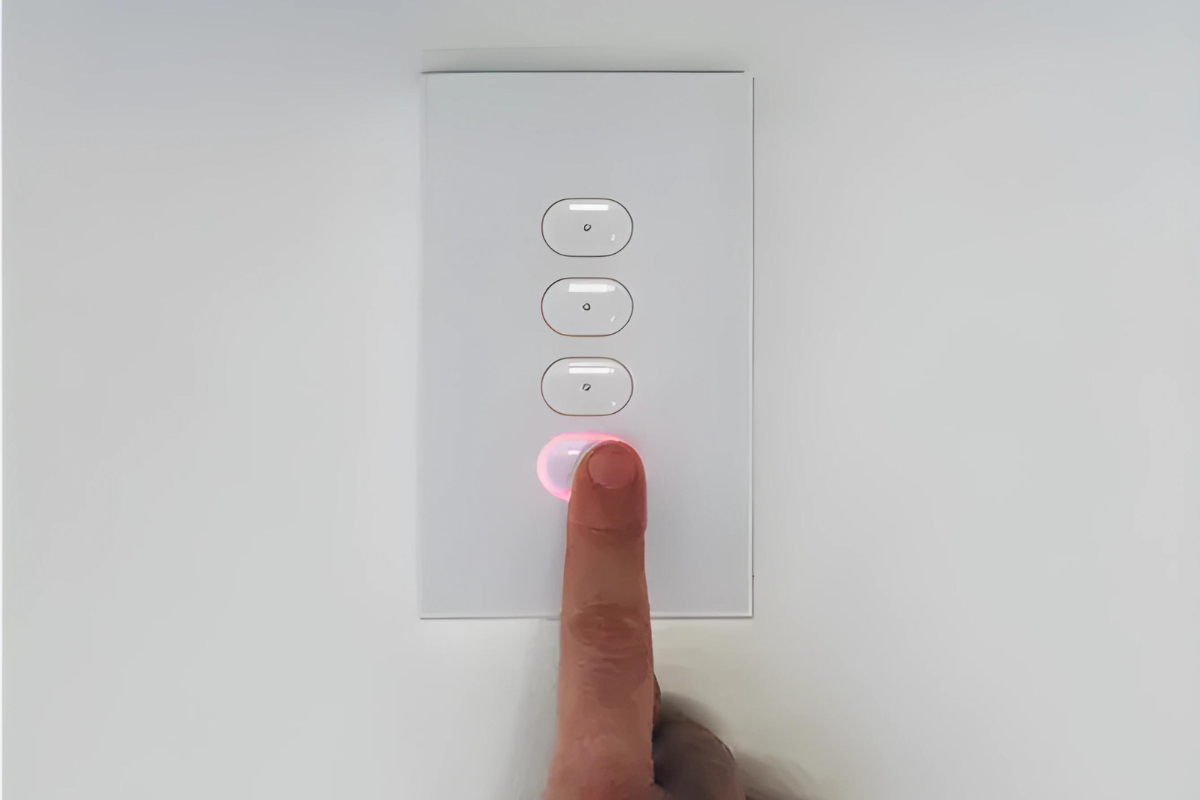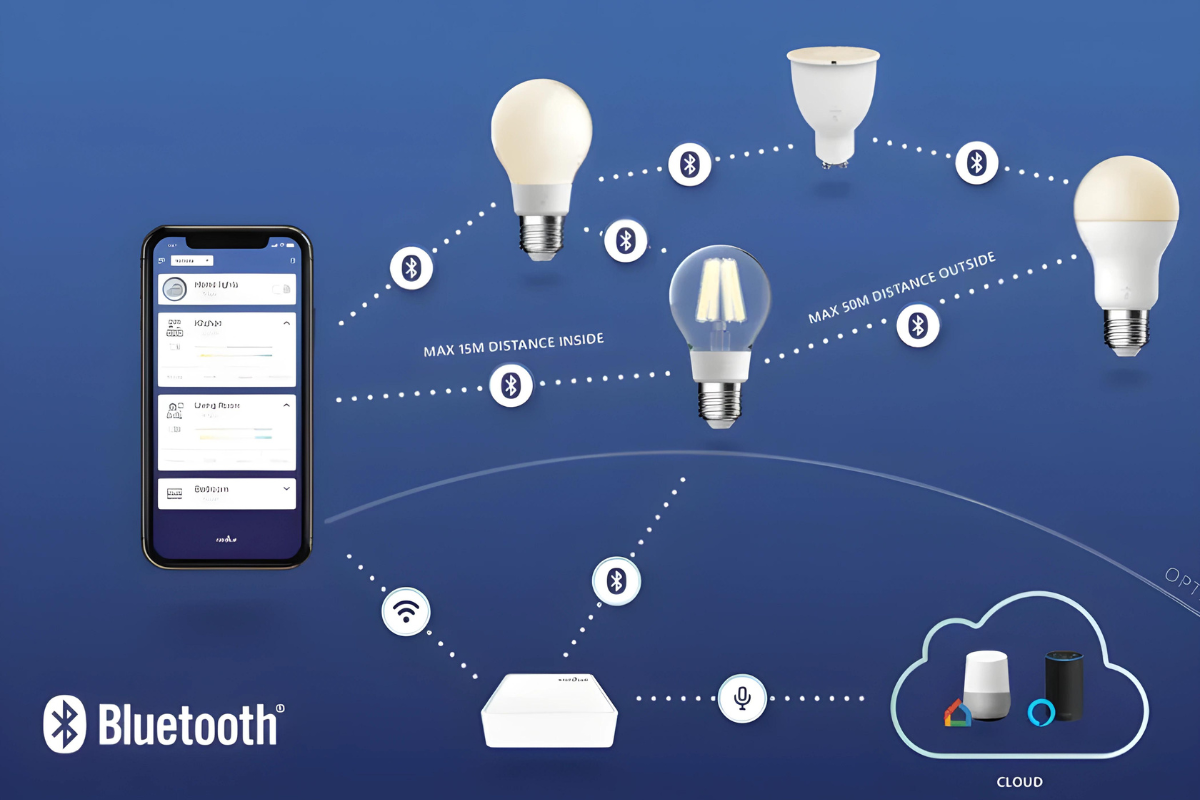Introduction to Smart Lighting

As a future of home automation is fast approaching, smart lighting is the first step. No need to worry about forgetting to turn off the lights, as you can control them through your phone from the supermarket, work, or any other remote location with access to the internet. In the current market, smart lighting is available as downlights, bulbs (bayonet, edison, GU10), ribbon lights, and even pendants.
Smart lighting involves the use of a mobile app or voice activation to maximise control and conveniently operate your lights, whether that be turning on and off, changing brightness, or changing colour. Complete lighting automation can be achieved by using a pre-set timer, based on your personal desired lighting schedule.
Why Choose Smart Lighting?
Save on energy and electricity costs by setting your lights on a predetermined routine on your mobile app, so that they automatically dim or turn off when they are no longer needed.
Smart lights are the most convenient, hands free, and worry-free lighting technology. They can be operated from the comfort of your bed or couch by voice activation or through a mobile app. You no longer need to get up to physically toggle a light switch to get your desired level of light.
No previous lighting technology has offered the wide range of RGB colours that smart lighting is able to produce. Create an endless number of lighting effects to suit any mood or event. Keep reading to find out how you can use smart lighting to create a specific atmosphere in any residential or commercial space.
Dimming
Many smart lights include ultra smooth dimming with as little as 1% increments of dimmability. Timers can also be set up, with day to dusk features offering the ability to select a certain light setting to automatically apply at a predetermined time of day. For example, you can make your lights automatically turn to a relaxing warm white colour and dim to 50% brightness at 8pm, to begin winding down for the night. And you can set them to automatically turn off at your usual bedtime. This is a great way to save energy and electricity costs while ensuring that your home atmosphere complements your natural circadian rhythm.

RGB & CCT Range
RGB smart lighting technology combines red, green, and blue in a range of different levels and combinations, offering over 16 million hues to choose from through the mobile app. This includes the standard range of white hues from as warm as 1500K all the way up to a 9000K blue-white.
If you happen to be a professional streamer, you need decent lighting in your background as well. LED lights have always been a popular choice as they can successfully capture your audience's attention when you're streaming. Whether you're looking to add some extra flare to your gaming station or enhance your gameplay, that adds a great and stylish option. You'll be able to create the perfect gaming environment, no matter your style.

Groups, Themes and Scenes
One major feature of smart lighting is that you are able to sync and group together a collection of lights through the mobile app so that all fittings in one space operate as one unit. For example, if you have 6 downlights in the living area, you can group them all into one location on the phone app, and control all fittings in one go. This allows for uniformity in dimming and colour switching.
Themes can be used to turn the lights to different complementary colours without having to control each one individually. For example, in a room of 6 downlights, a warm-toned preset theme would automatically ensure that the various lights turn to different shades of red and orange.
Using scenes, you can save customised light settings that work for a particular activity. For example, if you love to set your light to 70% brightness and a 2700K warm white tone for kicking back to watch a movie, you can save these settings as a scene and name it “Movie Time”. Then, just say “Hey Google, set lights to Movie Time” and retrieve your desired light setting.

Voice Activation
Smart lights can also be connected to voice activation devices such as Apple HomePod, HomePod Mini, Google Home, or Amazon Echo Dot. Use voice control to control the light completely hands-free.

How Does it Work?
Lighting automation can be achieved by using smart switches, Wi-Fi controlled lights, Bluetooth controlled lights, or Zigbee and Z-Wave technologies.
Smart Switches
Smart switches replace regular light switches and can be turned on and off remotely from a phone or voice activation. The light bulbs themselves do not have to be smart globes - the smart switch itself is sufficient to control the lights via Wi-Fi or Bluetooth. Smart dimmers can also be used with dimmable LED lights for more strategic lighting control.

A unique feature of smart switches is that they can also be wired to fans and hardwired appliances. However, this option does not come with the ability to conveniently control the colour temperature of light fittings, which limits the user’s options of feature lighting and mood lighting effects. This is smart switches’ detriment as compared to other smart lighting options.
Wi-Fi Controlled Lights
These fittings have Wi-Fi capabilities in-built, making the configuration process quick and easy. You simply need to download the corresponding mobile app and follow instructions to pair the light with the home Wi-Fi router. The most popular brand for this system is LifX, which has mid range price points, and offers a range of smart globes, downlights, and strip lighting.

However, a Wi-Fi lighting system is most suitable only in cases where a small number of smart lights are being used, perhaps for one particular room. Alternatively, if smart lighting is being used throughout the home, it is more appropriate to use a “hub-based” or “mesh” system.
Bluetooth Controlled Lights
Certain smart lights can also be controlled using bluetooth as an alternative to Wi-Fi. However, these lights require a gateway in order to be controlled remotely, as bluetooth has a limited range. Bluetooth involves a 1 to 1 pairing, which means that bulbs cannot be controlled from multiple devices in the home.

Bridge-Based Smart Lighting
If you are planning to achieve full home automation, with a multitude of smart lighting devices, bridge-based or hub-based systems are the way to go. This system uses a bridge module to create a “mesh” pathway between all light fittings so that they are able to communicate to each other, rather than each fitting receiving signals from the router individually. This creates a highly efficient system that requires less power than a “hubless” Wi-Fi or Bluetooth system.

Therefore, this option is more suited to homes that are predominantly automated, as it is reliable and energy saving. This mesh technology is called “ZigBee” or “Z-Wave”, with the most popular brand on the market being Philips Hue.
Additional Features
Certain smart lighting brands offer IP-rated options, suitable for making a statement in outdoor areas. Create unique moods by setting themed RGB lighting, with fade and strobe effects for pool parties or drinks on the terrace
Another available feature is to have the lights automatically turn on as you enter the home, and turn off as you leave. This works by connecting to your phone’s GPS to determine whether you are at home or not.
Final Tips
While automation is undoubtedly the future of home lighting, it can be difficult to know where to start, with a plethora of different set-ups, brands, and smart systems. That’s why we’ve paired with Casambi lighting, one of the international leaders in smart lighting technologies. By collaborating with them, we hope to bring you unique lighting design services and tailored smart lighting advice.
The Importance of Wiring and Lighting
Are you planning to purchase a new home or undergoing a major renovation? Make sure to consider the importance of having your wiring and lighting inspected. Lights are essential components of a home and should always work flawlessly. However, outdated wiring and hidden wiring issues can cause fires, risking your safety.
Before making your purchase, ensuring everything is up to code with a lighting inspection is crucial. Lights do more than brighten up a room; they can drastically change the look and feel of a space. With so many types of lighting available, it's essential to understand the benefits and disadvantages of each to choose the best option for your home.
Read more: Everything On Lighting From Wiring to Home Decor.
Be sure to check out our NEWEST Nordlux Oja oyster light, which can be paired to your smartphone via Bluetooth and controlled remotely!




